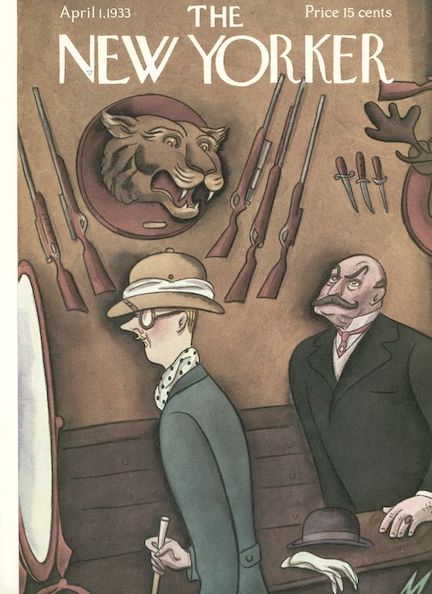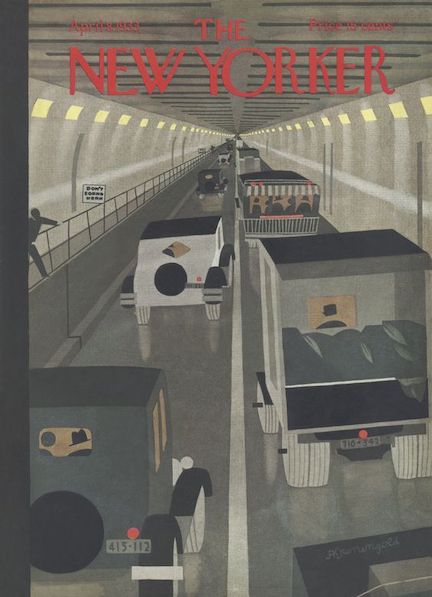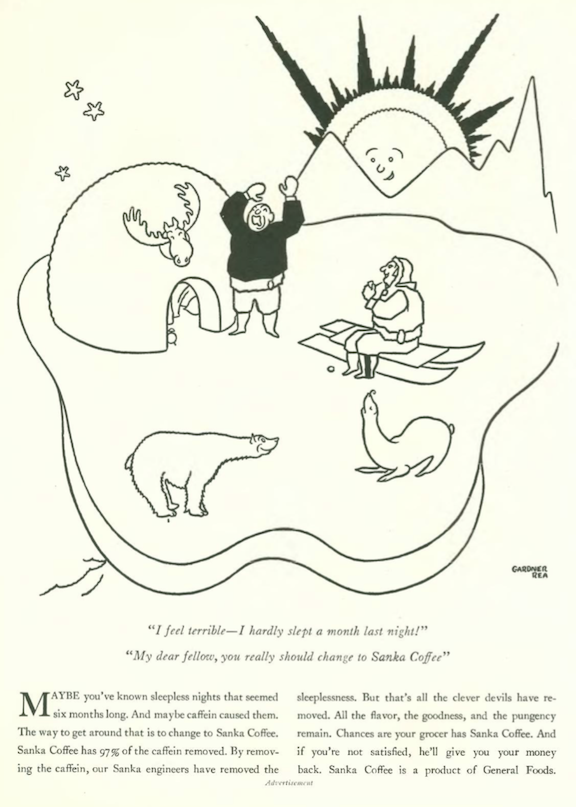While legal beer dominated the headlines in the spring of 1933—a little something to cheer about in those depressed times—few seemed to notice the troubles brewing on the other side of the pond.

Artist George Grosz (1893–1959) was not among them. A recent self-exile from his native Germany, Grosz had savagely caricatured the perversity of the bourgeois in 1920s Weimar Berlin; through his art he tried to warn fellow Germans of the horrors to come. Critic Lewis Mumford stopped in at the Raymond & Raymond galleries to check out the latest efforts of this Manhattan newcomer:

Although Grosz intended to make a clean break with his past after emigrating to New York in January 1933, his work still reflected his distaste for bourgeois sensibilities…


…and when war raged in his homeland, Grosz returned to chronicling the perversity of the Nazi regime…

* * *
Bluenose Blues
Sadly, we are moving toward the end of the pre-Code era, and as E.B. White explained in “Notes and Comment,” the talkies were about to get a bit less talkative:

* * *
From Our Advertisers
We begin with the back pages, and the latest in entertainment on Broadway…
…the makers of Cadillacs continued to promote the snob appeal of their 12- and 16-cylinder automobiles…it appears these folks are leaving an Easter service (note the doves), but whatever went on in there, they don’t seem very moved by the spirit…
…and here’s a close-up of the ad’s opening lines that suggested Cadillacs are an ideal complement to the apparel of those strutting their stuff on the Easter Parade…
…and here’s a jolly rendering for Lucky Strike by advertising illustrator John LaGatta (1894–1977)…his work was seen in many ads and in magazines during the first half of the 20th century, including twenty-two Saturday Evening Post covers…LaGatta’s style was known for its cool elegance, but I have to say this image is a bit disturbing, given that the banjo player’s cigarette is just inches from the woman’s eyeball…

…on to our cartoonists, we have a rare appearance by Clara Skinner (1902–1976), showing us here in the “Goings On About Town” section that John Held Jr wasn’t the only one making woodcuts…
…William Steig was lost at sea…
…Perry Barlow gave us this split scene (across two pages) of the challenges of mixing domestic and non-domestic life…
…Otto Soglow continued to chronicle the adventures of his popular Little King…
…we haven’t seen Mary Petty in awhile, so here’s a bit of gossip…
…James Thurber used a rare two-page spread of Alexander Woollcott’s “Shouts and Murmurs,” to lay out this unusual illustration…
…and Thurber again, in a more familiar vein…
…we move on April 8, 1933…

…and go straight to advertisers who were responding to the March 22 signing of the Beer and Wine Revenue Act by Franklin D. Roosevelt…the Congressional action made it permissible to sell beer as long as it was less than 3.2% alcohol…
…the makers of Rheingold beer came out of the gates with this ad showing that even elegant women could enjoy this taste of freedom…
…not completely sure, but I believe this was the first ad for Coca-Cola to appear in The New Yorker…
…in those tough times the steamship lines were beginning to realize they needed to appeal to the thrifty as well as the posh…
…Illustrator Herbert Roese offered up this Arno-esque gag for Johnson & Joshnson…
…on to our cartoons, we begin with this Peter Arno spoof of a series of R.J. Reynold’s Camel ads that referenced various magic tricks…
…in the same issue, just 20 pages later (p. 48) appeared one of the actual Camel ads…proof that Harold Ross would never kowtow to the advertising department—with the exception of those yeast ads for his friend and benefactor Raoul Fleischmann, who kept the magazine afloat in the early, lean years…
…we have more James Thurber, who kicked off the April 8 issue…
…and offered more hijinks inside…
…William Steig gave us this strip captioned “The Spicy Story” which ran across the bottom of pages 26-27…
…Gluyas Williams continued to hang out with his fellow citizens, this time in the skies above Manhattan…
…Daniel ‘Alain’ Brustlein showed us one cabbie’s reaction to the cheap ways of the posh crowd…
…and we end by saying grace, with Peter Arno…
Next Time: Beer Thirty…

















































